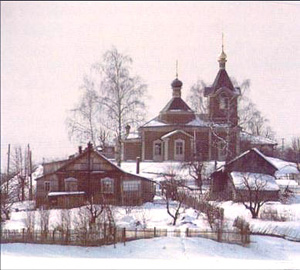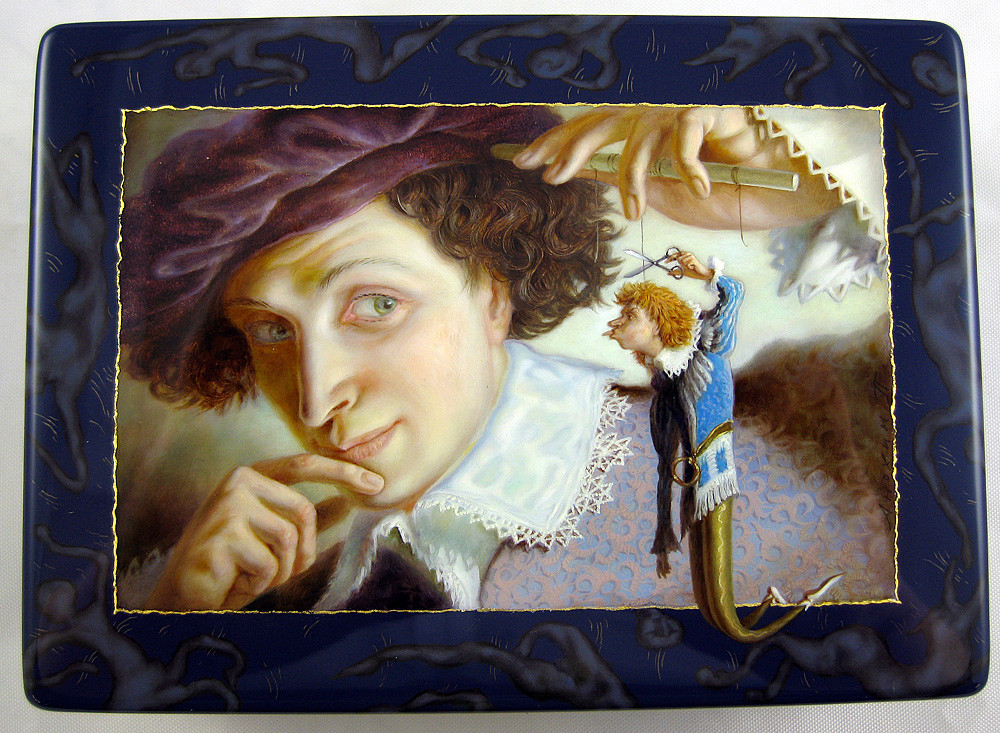Early History of Russian Lacquer Miniature Painting
Fedoskino is the original center for the unique art form of Russian lacquer miniature painting. This village of approximately 2,500 inhabitants is located on the banks of the Ucha River, just 24 miles north of Moscow. Today Fedoskino supports a thriving art industry that originated over two centuries ago. The original school and guild of Russian lacquer miniature painting was founded here in 1795. Today nearly three hundred artists and scores of highly skilled craftsmen support their families by producing the uniquely beautiful works of art we call Russian lacquer miniatures.
The landscape surrounding the village of Fedoskino is rich with natural beauty to inspire artistic creativity. The velvet green of the pinewoods, the silvery birch copses, and the changing seasons reflected in the waters of the Ucha river - all find their way into the paintings of Fedoskino's lacquer miniature artists.
While lacquer painting on wood emerged in Russia in the first half of the 18th century, the unique art of miniature painting on articles made of papier-mâché did not take root until 1795 when the techniques for making the papier-mâché were brought back to Russia from Germany.

Fedoskino Village
During the late 18th century taking snuff had become very popular in Europe and many workshops were established to fill the demand for decorative snuffboxes. At first snuffing was confined to high society as tobacco was an expensive imported product. It was natural then, that the early snuff boxes were also made of costly materials such as ivory, gold, silver, gems, and tortoiseshell. As snuff became less expensive and the practice of taking snuff extended to the middle and lower classes, a demand for inexpensive snuff boxes emerged. Several workshops in Europe began to mass produce snuffboxes to fill this demand. Late in the 18th century a Russian merchant named Piotr Korobov visited one of these workshops, the Johann Stobwasser's manufactory in Braunschweig, Germany and was impressed by the enterprise that produced good quality items from papier-mâché and lacquer. He quickly understood that he could incorporate the methods and materials used by Stobwasser to mass-produce inexpensive snuffboxes and other items back in Russia where there was a growing market.

Fedoskino Miniature Painting
With some paints and lacquer purchased from Stobwasser, and several of Stobwasser's artists-craftsmen, Korobov returned home to open his own workshop in Danilkovo just outside Fedoskino. His new enterprise employed between twenty and thirty people in the production of simple papier-mâché snuff boxes and varnished peaks for military caps and helmets. The earliest snuff boxes were plain polished lacquer or had cut outs of popular prints glued to the surface of the boxes and lacquered over. Several small competing workshops soon opened and by the early years of the 19th century, the lacquer workshops in Danilkovo and Fedoskino produced approximately 13,000 lacquered papier-mâché articles per year that were sold throughout Europe.

